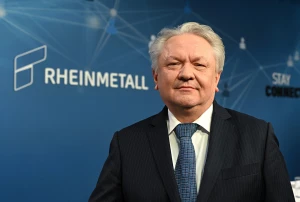
Ukraine's offensive operations create conditions for broader counteroffensive goals - ISW
Ukraine's Armed Forces have made progress in offensive operations on three fronts, creating conditions for a broader counteroffensive
The Institute for the Study of War (ISW) reported this.
“Ukrainian forces continued counteroffensive operations in at least three directions and reportedly made gains on June 15,” the report says.
According to the spokesperson for the AFU General Staff, Oleksandr Stupun, the soldiers conducted successful offensive operations north and northwest of Bakhmut. The press center of the Tavria group of troops reported that the Ukrainian Armed Forces had advanced up to one kilometer in the western part of the Donetsk region and were continuing to try to improve their tactical positions in the area of Vuhledar (30 km southwest of Donetsk).
Russian military correspondents, on the other hand, claimed that Ukrainian forces had allegedly unsuccessfully attacked southwest and south of Orikhiv in the western Zaporizhzhia region, and said that Ukrainian forces were increasing the pace of the counteroffensive in the area as weather conditions improved.
In his turn, Deputy Chief of the Main Operational Directorate of the AFU General Staff, Brigadier General Oleksii Hromov, said that Ukrainian troops had advanced up to 3 km in the area of Mala Tokmachka in the western Zaporizhzhia region and up to 7 km in the area of Velyka Novosilka in the western Donetsk region, and liberated 7 settlements in these areas since the start of counteroffensive operations.
However, on June 15, Mykhailo Podolyak, an adviser to the head of the President's Office, said that the Ukrainian Armed Forces had not yet launched a counteroffensive as such, but acknowledged that troops were conducting offensive operations. This may indicate that the Ukrainian Armed Forces have not yet begun their main effort, analysts say.
Thus, according to the ISW, the Ukrainian offensive is likely to set the stage for broader Ukrainian counteroffensive objectives that are not immediately clear and thus represent the initial phase of an ongoing counteroffensive.
ISW explained what could complicate the Ukrainian counteroffensive
The Russian military commander claims that Russian electronic warfare systems prevent Ukrainian troops from using high-precision GPS-guided munitions and severely disrupt Ukrainian radio communications.
In particular, Russian troops use Murmansk-BN electronic warfare systems to disable the sensors of Ukrainian airborne reconnaissance assets, and Krasukha-4 electronic warfare systems to suppress communication with satellite signals within a 300 km radius.
ISW has previously assessed that Russian electronic warfare assets are crucial to complicating Ukrainian counterattacks in the Zaporizhzhia sector. However, it is unclear whether the successful electronic warfare tactics are the result of superior capabilities or advanced use of these systems.
Experts added that the initial Ukrainian counteroffensive and Russian defense operations should not be extrapolated to predict the outcome of all Ukrainian counteroffensive operations.
-
On the morning of June 15, Andrii Kovalov, spokesman for the AFU General Staff, said that the Ukrainian Armed Forces had succeeded in storming the Rozdolivka-Krasnopolivka and Berkhivka-Yahidne directions, near Bakhmut, and that fighting was ongoing in the Berdiansk and Mariupol sectors.
-
Instead, Brigadier General Oleksii Hromov, deputy head of the Main Operational Directorate of the AFU General Staff, reported that the Defense Forces were advancing on the eastern and southern frontlines. They managed to advance up to 1 km near Vuhledar, Donetsk region. In the Zaporizhzhia direction, 7 villages were liberated over the week.
- News











































